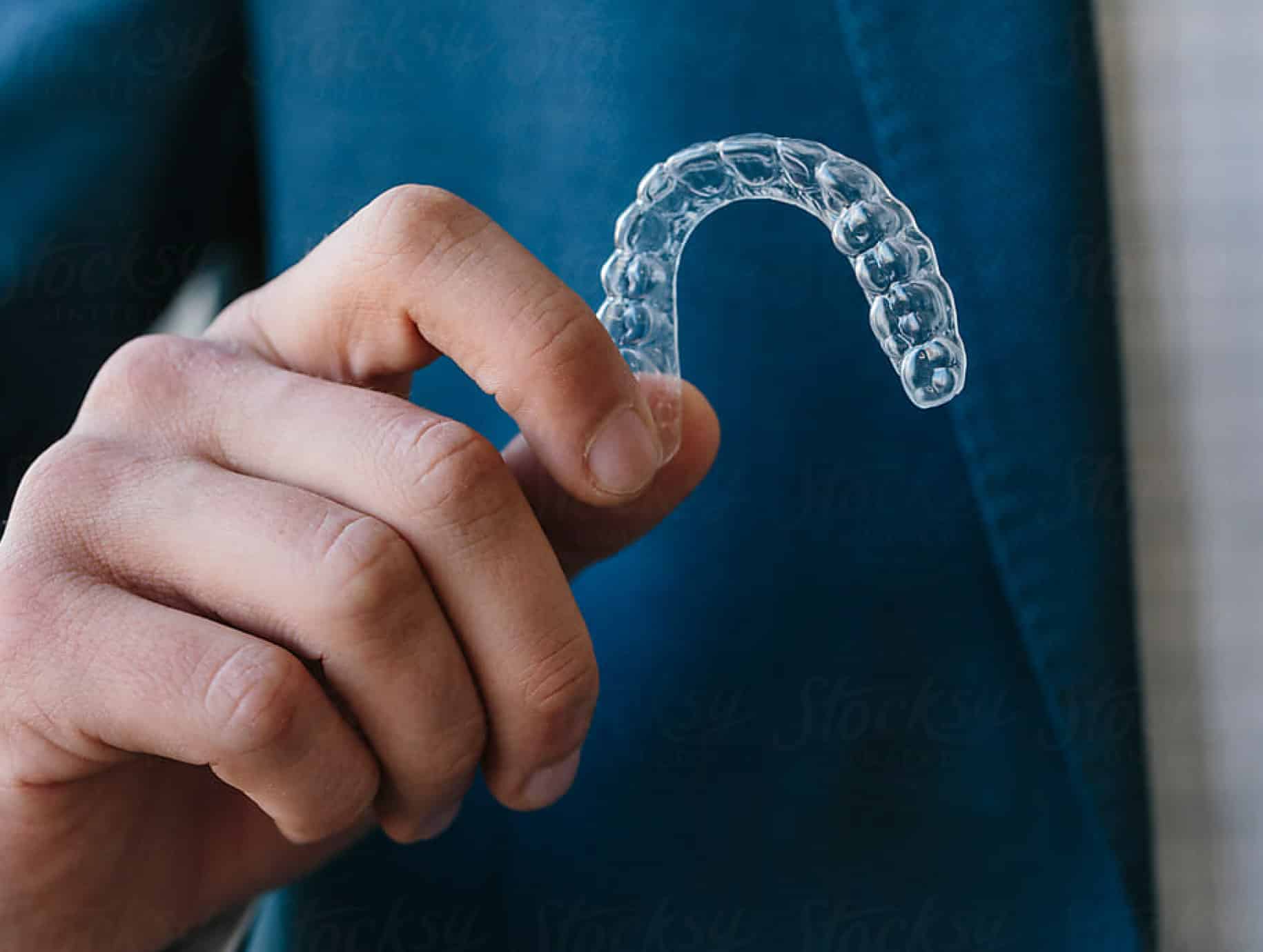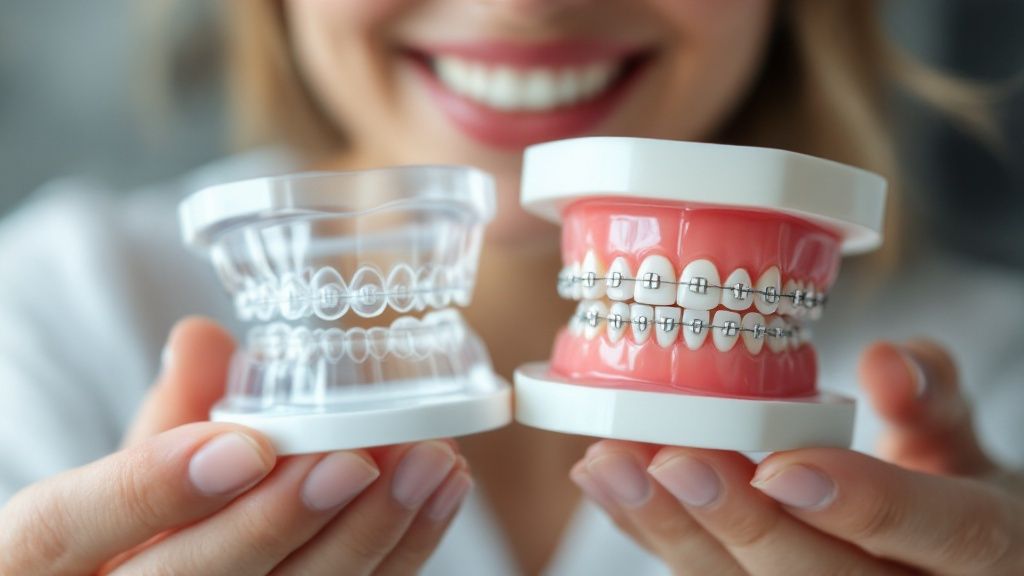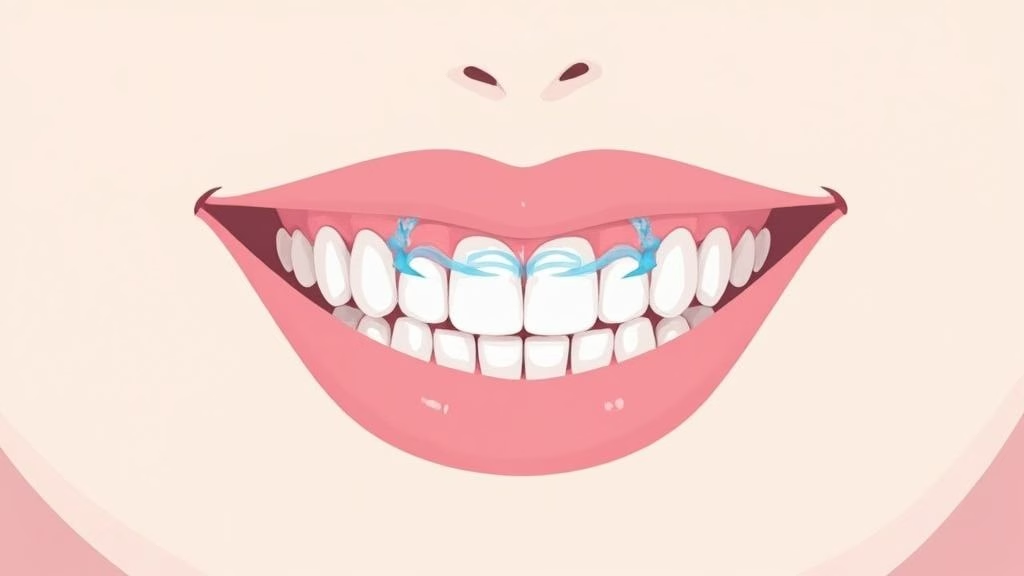Clear Aligners vs Braces: Your Expert Guide to Making the Right Choice for a Perfect Smile

The Evolution of Modern Orthodontic Solutions

The field of orthodontics has come a long way from traditional metal braces to modern alternatives like clear aligners. Since their introduction by Align Technology in 1999, clear aligners have gained widespread acceptance among patients seeking teeth straightening solutions. By 2023, these virtually invisible aligners had helped 17 million people achieve straighter smiles, including 4.5 million teenagers. This impressive growth shows how many patients value both effective treatment and aesthetic appeal during the process Learn more about clear aligner statistics.
Technological Advancements Driving Change
Modern orthodontic care goes beyond just appearance. New tools like digital scanning, 3D printing, and AI have changed how orthodontists plan and deliver treatments. These technologies allow dentists to create detailed maps of tooth movement and predict outcomes with greater accuracy. For example, 3D imaging now lets patients see a visual preview of their expected results before starting treatment, helping them make more informed decisions about their care.
Why Patients Prefer Clear Aligners
Clear aligners offer several key benefits that make them popular among teens and adults:
- Aesthetics: The aligners are nearly invisible when worn
- Comfort: Smooth plastic construction eliminates metal brackets and wires
- Flexibility: Patients can remove aligners for eating and cleaning teeth
These advantages make clear aligners particularly appealing for professionals and anyone who wants their orthodontic treatment to fit seamlessly into their daily life.
The Transformational Journey
While traditional braces remain highly effective, the shift toward clear aligners reflects changing patient priorities around convenience and satisfaction. Many people now seek orthodontic solutions that offer both reliable results and a comfortable treatment experience. As dental technology continues to improve, patients can expect even better options that balance effectiveness with lifestyle considerations.
The choice between clear aligners and braces increasingly depends on individual needs and preferences rather than just clinical factors. This patient-centered approach, combined with ongoing advances in orthodontic care, promises to make straight, healthy smiles more achievable than ever before.
Understanding Treatment Timelines and Commitment Levels

When deciding between clear aligners and braces, one of the most important factors to consider is the time commitment each option requires. While both methods can effectively straighten teeth, they differ significantly in treatment duration and how much responsibility falls on the patient. These differences can affect both your daily routine and your treatment results.
Treatment Duration Expectations
Clear aligners and traditional braces work on different timelines. Clear aligners from providers like Toothfairy typically complete treatment in 12 to 18 months, depending on how complex your case is. Traditional braces usually take longer, requiring 18 to 36 months on average. This difference comes down to how each method applies pressure to move teeth. For those wanting quicker results, clear aligners may be the better choice.
The Importance of Patient Compliance
How much responsibility you take on varies between the two options. Clear aligners demand consistent wear for 20 to 22 hours daily to be effective. This requires strong self-discipline to maintain the proper wear schedule. In contrast, traditional braces stay fixed in place once installed, putting more control in the orthodontist’s hands rather than relying on patient habits. Your orthodontist handles all adjustments, eliminating the need for daily decisions about wear time. For a detailed comparison of treatment times, you can learn more about treatment durations.
Lifestyle Adjustments and Maintenance
Each option comes with its own set of lifestyle changes. Braces restrict what you can eat and require careful cleaning around brackets and wires. Clear aligners must be removed before eating or drinking anything besides water – a minor hassle that comes with the benefit of easier cleaning. You’ll need to brush and floss normally, then clean your aligners before putting them back in.
Setting Realistic Expectations
Making the right choice depends on understanding what each option requires from you. Consider your daily habits, ability to follow treatment instructions, and how quickly you want to see results. Have an open discussion with an orthodontist or clear aligner provider about your lifestyle and goals. This honest conversation will help ensure you pick the option that best fits your needs and leads to the smile you want.
Real Patient Experiences and Satisfaction Insights
When comparing clear aligners to braces, real patient feedback gives us valuable insights beyond just technical aspects. A successful orthodontic treatment isn’t just about achieving proper alignment – it’s about the entire patient journey and experience.
The Shift in Patient Preferences
Recent data shows a strong trend toward clear aligners among orthodontic patients. In 2024, 70% of new orthodontic treatments used clear aligners, up significantly from 59% in 2020. What’s driving this shift? Patients consistently point to three main benefits: the ability to remove aligners for eating and special occasions, improved comfort during treatment, and a more discreet appearance.
A comprehensive patient survey found that 85% chose clear aligners specifically for these lifestyle advantages. Even more telling, 78% reported being “highly satisfied” with their clear aligner results, compared to 62% for traditional braces. You can explore more statistics about treatment preferences here.
Common Challenges and How Patients Overcome Them
While clear aligners offer many benefits, patients do face some initial adjustments. The biggest challenge is maintaining the required 20-22 hours of daily wear time. Many successful patients report that setting regular reminders and linking aligner wear to daily routines helps them stay on track.
New aligner sets can cause temporary pressure or mild discomfort as teeth begin shifting. Most patients say this sensation fades within a few days. Minor speech changes are also common at first, but patients typically adapt quickly as they get used to wearing their aligners.
The Psychological Impact of Treatment
The journey to straighter teeth affects more than just oral health – it can significantly boost confidence and social comfort. Clear aligners offer unique psychological benefits since they’re barely noticeable during treatment. This means patients can smile confidently throughout their orthodontic journey, not just after completing treatment.
Many patients report feeling more at ease in professional and social situations with clear aligners compared to traditional braces. This emotional comfort often leads to better treatment compliance and more satisfying results.
Practical Advice From Patients
Experienced clear aligner patients emphasize that consistency is key to success. Their top tips include: stick to the prescribed wear schedule even when it’s inconvenient, clean aligners properly, and maintain open communication with providers like Toothfairy about any concerns. They also stress the importance of keeping the end goal in mind – a healthier, more confident smile that can last a lifetime with proper maintenance.
Making Sense of Treatment Costs and Coverage Options
Looking at the costs and insurance options for orthodontic treatment can feel overwhelming. Whether you choose clear aligners or braces, understanding the financial details is key to making the right choice for your situation. Here’s what you need to know about paying for your orthodontic care.
Cost Breakdown: Clear Aligners vs. Braces
The price for orthodontic treatment varies based on your specific needs, treatment length, and location. Traditional braces typically cost between $3,000 and $7,000, while clear aligners range from $4,000 to $8,000. Though clear aligners may cost more upfront, many people find their benefits worth the investment.
Companies like Toothfairy help make clear aligners more affordable through competitive pricing and payment plans. Many providers offer upfront payment discounts or financing options to spread costs over time.
Evaluating Insurance Coverage
Most dental insurance plans cover some portion of orthodontic treatment for both clear aligners and braces. Coverage levels differ between plans – some may pay up to half the total cost, while others set lifetime maximums for orthodontic benefits.
Before starting treatment, call your insurance company to learn exactly what your plan covers. Ask specific questions about coverage for both braces and clear aligners, approved providers, and any treatment restrictions. This helps you budget effectively and avoid surprise expenses.
Exploring Financing Alternatives
If you need additional payment options beyond insurance, several choices exist. Many orthodontists offer in-house payment plans letting you pay monthly over the course of treatment. This makes the total cost more manageable.
You can also use tax-advantaged accounts like health savings accounts (HSAs) or flexible spending accounts (FSAs) for orthodontic expenses. Setting aside pre-tax dollars in these accounts reduces your overall treatment costs.
Identifying and Managing Hidden Costs
Be sure to factor in additional expenses beyond the basic treatment fee. These may include retainers (needed after treatment), emergency visits, or extra imaging. For example, ask about replacement costs if aligners are lost and fees for missed appointments.
Get a complete cost breakdown from your provider upfront. Understanding all potential expenses helps you make an informed choice between clear aligners and braces that fits both your dental needs and your budget.
By weighing these financial factors carefully, you can select the orthodontic treatment option that makes the most sense for your situation. The right choice balances quality care with affordability.
Adapting Your Lifestyle During Treatment
Making the choice between clear aligners and braces requires understanding how each option will affect your daily routine. Each treatment method comes with its own set of adjustments and considerations for your lifestyle. Here’s what you need to know to select the option that best matches your needs.
Dietary Changes and Oral Hygiene
With traditional braces, you’ll need to make some changes to your eating habits. Hard, sticky, and crunchy foods are off-limits since they can damage the brackets and wires – this means no chewy candies, popcorn, or hard pretzels. Clear aligners offer more flexibility since you remove them before eating, allowing you to maintain your normal diet.
The trade-off is that clear aligners require strict attention to oral hygiene. You must brush and floss after every meal or snack before reinserting the aligners to prevent food from getting trapped against your teeth. While braces need careful cleaning around brackets and wires, aligners simply need regular rinsing and gentle brushing with a soft toothbrush.
Managing Social Situations and Special Occasions
Many people, especially teens and adults, feel self-conscious about wearing braces in social settings. Clear aligners provide a major advantage here since they’re nearly invisible, allowing you to smile confidently throughout your treatment.
For important events like weddings, photo sessions, or presentations, clear aligners can be briefly removed. Just remember to put them back in afterward to stay on schedule with your treatment. Traditional braces don’t offer this flexibility since they’re permanently attached until treatment ends.
Physical Activities, Sports, and Musical Instruments
Athletes wearing braces need extra protection for their mouth and orthodontic hardware. A custom-fitted mouthguard is essential during contact sports. Clear aligners typically don’t require additional protective gear, though you should check with your Toothfairy dentist about specific activities.
Musicians face an adjustment period with either option. Braces can initially affect how you play wind instruments by changing your embouchure. While aligners are removable, they may still require tweaks to your technique to maintain proper airflow and sound. Regular practice helps adapt your playing style to your chosen treatment.
Adapting to Maintenance Routines
Both treatment options need consistent care to be effective. Braces require regular appointments every few weeks for wire tightening and adjustments. Clear aligners often mean fewer in-person visits, as you’ll typically switch to new sets every 1-2 weeks at home following your Toothfairy dentist’s plan.
Your commitment to following the prescribed routine directly impacts your results. Whether that means keeping orthodontic appointments or changing aligners on schedule, staying consistent is key. By carefully weighing these lifestyle factors against your daily routine and preferences, you can make an informed choice that supports both your orthodontic goals and quality of life.
Making Your Informed Treatment Choice
Choosing between clear aligners and braces is an important decision that affects both your daily life and long-term dental health. The right choice depends on understanding how each option fits your specific needs and lifestyle.
Questions to Ask During Consultations
Going into your dental consultations well-prepared helps you get the information needed to make a smart choice. Focus on these key questions:
- Treatment Timeline: Get specifics on how many months or years treatment will take
- Daily Requirements: Understand wear time and maintenance needs
- Pain Management: Learn what discomfort to expect and ways to handle it
- Impact on Activities: Find out how treatment affects eating, sports, and other daily activities
Getting clear answers to these questions gives you a realistic picture of what to expect with each option.
Assessing Treatment Proposals
When reviewing treatment plans from providers, carefully compare these essential factors:
- Complete Costs: Ask for full pricing including extras like retainers and follow-up visits
- Insurance Benefits: Check what portion insurance covers and what payment plans are offered
- Track Record: Request data on success rates for cases like yours
Taking time to analyze these details helps identify which option provides the best value and results for your situation.
Factors Influencing Your Final Decision
Your personal circumstances play a big role in determining the best choice. Key considerations include:
- Visual Impact: Clear aligners offer a less noticeable treatment option
- Case Complexity: More severe alignment issues may require traditional braces
- Schedule Flexibility: Clear aligners often need fewer office visits
- Daily Routine: Consider impacts on oral care, diet, and activities you enjoy
Creating Your Personalized Decision Framework
Use these insights to build a clear decision framework based on what matters most to you. Talk through your thoughts with family or friends who know your habits and preferences well.
For a modern approach to clear aligner treatment that works with your schedule, check out Toothfairy. They combine expert care with convenient remote monitoring and access to dental professionals when needed. Take the first step toward your ideal smile today!
Last updated on January 28, 2025

Kian Dhinsa
Dr. Kian Dhinsa is a Birmingham-based dental practitioner with a special interest in orthodontics, general dentistry, and and surgery.
He has been recipient of numerous awards, for dental care and digital innovation.
Kian Dhinsa
Dr. Kian Dhinsa is a Birmingham-based dental practitioner with a special interest in orthodontics, general dentistry, and and surgery. He has been recipient of numerous awards, for dental care and digital innovation.





